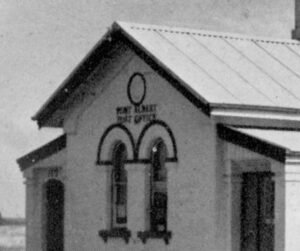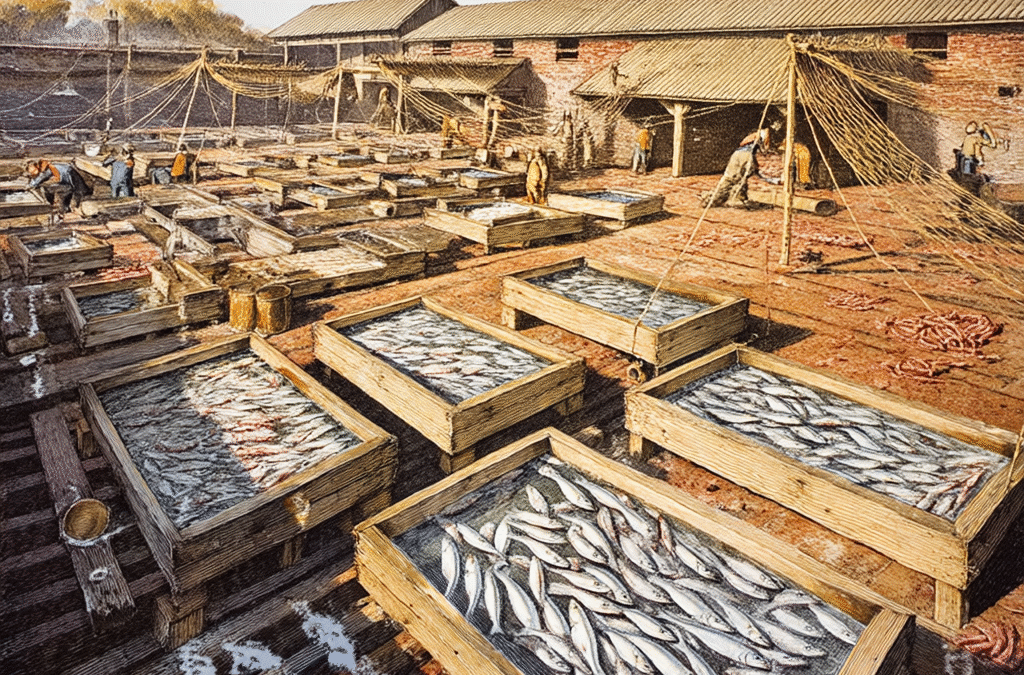Throughout history, moustaches have played a significant role in shaping the identity and style of various groups of people. One such group is sailors and military personnel, who have a long-standing tradition of sporting moustaches. In this article, we will delve into the fascinating history of moustaches and explore their significance among sailors and military personnel.
The Beginnings of Moustache Culture
 The history of moustaches stretches back to ancient civilizations, where they were more than just a fashion statement – they were potent symbols of status, wisdom, and power. In ancient Egypt, for example, pharaohs wore fake moustaches during religious ceremonies, signifying their connection to the gods. This practice was not just limited to men; even female pharaohs like Hatshepsut adorned themselves with artificial moustaches as a symbol of their authority.
The history of moustaches stretches back to ancient civilizations, where they were more than just a fashion statement – they were potent symbols of status, wisdom, and power. In ancient Egypt, for example, pharaohs wore fake moustaches during religious ceremonies, signifying their connection to the gods. This practice was not just limited to men; even female pharaohs like Hatshepsut adorned themselves with artificial moustaches as a symbol of their authority.
In Mesopotamia, moustaches were a mark of dignity and respect. Assyrian and Babylonian sculptures and carvings frequently depict men with thick, flowing moustaches, signifying their strength and virility. Similarly, in ancient India, the moustache was seen as a symbol of wisdom and respect. Vedic texts and epics portray sages and warriors with well-groomed moustaches, illustrating their status and valor.
 The Greeks and Romans also had a strong moustache culture. For the Greeks, moustaches were a sign of maturity and philosopher Aristotle famously sported one. The Romans initially followed the Greek style but later moved towards a clean-shaven look, especially during the military campaigns, as a symbol of Roman civilization. However, notable figures like Emperor Hadrian revived the moustache, bringing it back into fashion.
The Greeks and Romans also had a strong moustache culture. For the Greeks, moustaches were a sign of maturity and philosopher Aristotle famously sported one. The Romans initially followed the Greek style but later moved towards a clean-shaven look, especially during the military campaigns, as a symbol of Roman civilization. However, notable figures like Emperor Hadrian revived the moustache, bringing it back into fashion.
In these ancient cultures, the moustache was more than mere facial hair. It was an integral part of a man’s identity, reflecting his status, role in society, and even his beliefs and values. This deep-seated cultural significance set the stage for the moustache’s enduring legacy throughout human history.
1800–1880s – the golden age of whiskers
 The 19th century, particularly between 1800 and 1880, was a transformative era for facial hair, especially within the British Army and Navy. During this time, moustaches and beards were not mere fashion statements but potent symbols of a military man’s rank, accomplishments, and experience.
The 19th century, particularly between 1800 and 1880, was a transformative era for facial hair, especially within the British Army and Navy. During this time, moustaches and beards were not mere fashion statements but potent symbols of a military man’s rank, accomplishments, and experience.
In the British Army, especially among officers serving in colonial territories, facial hair became a prominent feature. The adoption of moustaches and beards was often a nod to the local styles, symbolizing respect and authority. It was also a practical adaptation to local environments, reflecting a soldier’s ability to assimilate and operate effectively in diverse cultural settings. Thus, a soldier’s facial hair became a marker of his rank and a testament to his worldliness and adaptability.
 The Royal Navy saw a similar trend where facial hair symbolized seafaring experience. Sailors, often away at sea for extended periods, would grow their facial hair, which then became emblems of their endurance and maritime adventures. Senior naval officers were particularly noted for their well-groomed facial hair, reflecting their extensive service and achievements. The style and maintenance of a sailor’s beard or moustache subtly indicated their rank and years of service, with fuller, more elaborately groomed facial hair often denoting seniority and extensive sea experience. Conversely, younger or less experienced sailors tended to have simpler facial hair styles.
The Royal Navy saw a similar trend where facial hair symbolized seafaring experience. Sailors, often away at sea for extended periods, would grow their facial hair, which then became emblems of their endurance and maritime adventures. Senior naval officers were particularly noted for their well-groomed facial hair, reflecting their extensive service and achievements. The style and maintenance of a sailor’s beard or moustache subtly indicated their rank and years of service, with fuller, more elaborately groomed facial hair often denoting seniority and extensive sea experience. Conversely, younger or less experienced sailors tended to have simpler facial hair styles.
In Australia, prior to 1879, officers and seamen weren’t permitted to wear beards but were permitted to have moustaches. In 1879 there was a shift in regulations which permitted ‘all officers and men’ to wear beards,” As fresh water was a precious commodity on board, shaving was not considered a priority. As the regulations of 1879 state, “the use of the razor must be entirely discontinued”, a specification that still stands today, as outlined in ANP4426-1203: “when permission to grow a beard is given, the use of the razor is to be discontinued except for the removal of shaggy growth at the extremities of the beard, in particular on the neck”.
This period also witnessed the rise of elaborate grooming practices among military personnel. Moustaches and beards were carefully styled and maintained, often with the aid of grooming products like oils and waxes. This level of grooming was more than a matter of vanity; it reflected a soldier’s discipline and meticulousness, traits highly regarded in the military.
 By the late 19th century, while civilian fashion shifted away from facial hair, the military maintained its strong tradition of moustaches and beards. The moustache, in particular, continued to symbolize a soldier’s or sailor’s masculinity, bravery, and commitment to duty, cementing its status as an iconic element of military fashion.
By the late 19th century, while civilian fashion shifted away from facial hair, the military maintained its strong tradition of moustaches and beards. The moustache, in particular, continued to symbolize a soldier’s or sailor’s masculinity, bravery, and commitment to duty, cementing its status as an iconic element of military fashion.
The 19th century British military, and by extension that in Australia, saw facial hair as a significant aspect of a military man’s identity. In the Navy, the style and maintenance of one’s facial hair acted as a subtle, yet telling, indicator of rank and experience, reflecting the deep-rooted traditions and cultural nuances of naval life.
1880s–1910s: Clean Shaven with a Twist
As the 19th century drew to a close, a trend toward a cleaner-shaven look began to emerge in broader society. This period, spanning the 1880s to the 1910s, marked a significant shift in male grooming habits. However, in military and naval circles, the moustache maintained its stronghold, albeit with a twist that reflected the changing times.
 The general public’s move towards a clean-shaven appearance was influenced by several factors. Advances in razor technology made shaving easier and more accessible. The safety razor, introduced in the late 1800s, played a pivotal role in this shift. Additionally, the association of beards with older generations made younger men eager to distinguish themselves through a more clean-cut appearance.
The general public’s move towards a clean-shaven appearance was influenced by several factors. Advances in razor technology made shaving easier and more accessible. The safety razor, introduced in the late 1800s, played a pivotal role in this shift. Additionally, the association of beards with older generations made younger men eager to distinguish themselves through a more clean-cut appearance.
Despite this societal shift, moustaches remained popular among soldiers and sailors. In the military context, the moustache evolved from a symbol of rugged masculinity to one of discipline and order. The British & Australian Armeis, for example, while relaxing its stringent rules on beards, still saw the moustache as an integral part of the military uniform. This was a period where the moustache became a carefully groomed, neatly trimmed symbol of a soldier’s commitment to his duty and his adherence to military standards.
In the Royal Navy, the tradition of wearing moustaches continued, though with stricter grooming standards reflecting the overall societal trend towards neatness. The moustache in this context was a bridge between the old world and the new, representing both the ruggedness of sea life and the discipline of naval service.
 This era also saw the moustache become a symbol of imperial prowess and national pride, especially in the context of the British Empire. Iconic figures of the time, such as Lord Kitchener, sported prominent moustaches that became synonymous with British military might and colonial power.
This era also saw the moustache become a symbol of imperial prowess and national pride, especially in the context of the British Empire. Iconic figures of the time, such as Lord Kitchener, sported prominent moustaches that became synonymous with British military might and colonial power.
As the world moved towards the First World War, the moustache’s role in military and naval imagery remained strong, even as the broader public increasingly favored the clean-shaven look. The persistence of the moustache in these spheres during this period of transition underscores its deep-rooted cultural and symbolic significance.
1910-1960s: The Decline Amidst Wars
 The period from 1910 through the 1960s marked a significant decline in the popularity of moustaches and facial hair, particularly within military circles. This era, dominated by two World Wars and significant cultural shifts, saw the moustache transition from a symbol of military prowess to a less favored accessory in the face of practical wartime necessities and changing fashion sensibilities.
The period from 1910 through the 1960s marked a significant decline in the popularity of moustaches and facial hair, particularly within military circles. This era, dominated by two World Wars and significant cultural shifts, saw the moustache transition from a symbol of military prowess to a less favored accessory in the face of practical wartime necessities and changing fashion sensibilities.
The onset of World War I brought about a crucial change in grooming standards for soldiers. The need for effective gas mask seals was paramount, and facial hair could interfere with the mask’s fit, potentially putting soldiers’ lives at risk. This practical consideration necessitated a shift towards a clean-shaven look among troops. The war also brought about a sense of uniformity and discipline, where personal grooming took a backseat to the practicalities of war.
 The interwar period and World War II further entrenched the preference for being clean-shaven in the military. The clean-shaven look became associated with modernity, efficiency, and the military’s evolving technological advancements. This period also saw significant advancements in shaving technology, making it easier and more convenient for men to maintain a clean-shaven appearance.
The interwar period and World War II further entrenched the preference for being clean-shaven in the military. The clean-shaven look became associated with modernity, efficiency, and the military’s evolving technological advancements. This period also saw significant advancements in shaving technology, making it easier and more convenient for men to maintain a clean-shaven appearance.
 In the broader society, the first half of the 20th century was a time of considerable change in men’s fashion. The Roaring Twenties and the subsequent decades saw a general move towards a more polished and refined look, with Hollywood and emerging media further influencing public perception. Iconic figures of the time, often depicted in films and advertisements, typically sported a clean-shaven look, further diminishing the popularity of the moustache.
In the broader society, the first half of the 20th century was a time of considerable change in men’s fashion. The Roaring Twenties and the subsequent decades saw a general move towards a more polished and refined look, with Hollywood and emerging media further influencing public perception. Iconic figures of the time, often depicted in films and advertisements, typically sported a clean-shaven look, further diminishing the popularity of the moustache.
However, it wasn’t just practicality and fashion that contributed to the decline of the moustache. The post-war period saw a general association of certain styles of moustaches with authoritarian figures from the war,  which further discouraged their adoption in the post-war era.
which further discouraged their adoption in the post-war era.
By the 1950s and 60s, the moustache and facial hair had become rarities in Western culture, particularly in professional and military settings but they did still exist, more so perhaps in the Australian navy than in others within the Commonwealth. The emphasis was still on conformity and neatness, reflecting the broader cultural ethos of the time, however there were still the practicalities of long times at sea.
ethos of the time, however there were still the practicalities of long times at sea.
1960s-1980s: Facial Hair as a Symbol of Protest
 The period from the 1960s to the 1980s marked a significant cultural shift, where facial hair, particularly in the West, transformed into a symbol of rebellion, counterculture, and political protest. This era, defined by social upheaval, the Civil Rights Movement, and the Vietnam War, saw a resurgence of moustaches and beards, representing a stark departure from the clean-shaven norm of the previous decades.
The period from the 1960s to the 1980s marked a significant cultural shift, where facial hair, particularly in the West, transformed into a symbol of rebellion, counterculture, and political protest. This era, defined by social upheaval, the Civil Rights Movement, and the Vietnam War, saw a resurgence of moustaches and beards, representing a stark departure from the clean-shaven norm of the previous decades.
In the 1960s, the counterculture movement, with its emphasis on breaking free from societal norms, embraced beards and moustaches as symbols of non-conformity and defiance against the establishment. This was a time when young people were questioning and challenging traditional values, and facial hair became a visible marker of this rebellion. Iconic figures of the era, including musicians, activists, and intellectuals, often sported facial hair, reinforcing its association with the counterculture movement.
 The 1970s further solidified this trend. The moustache, in particular, became a prominent feature of the era’s fashion. It was no longer just a symbol of protest but had also become a fashionable accessory in its own right, seen across various subcultures and lifestyles. This period also saw the rise of the ‘macho’ image, where moustaches were associated with masculinity and virility, as reflected in popular media and celebrity culture.
The 1970s further solidified this trend. The moustache, in particular, became a prominent feature of the era’s fashion. It was no longer just a symbol of protest but had also become a fashionable accessory in its own right, seen across various subcultures and lifestyles. This period also saw the rise of the ‘macho’ image, where moustaches were associated with masculinity and virility, as reflected in popular media and celebrity culture.
However, within the military, these cultural changes had limited impact. The armed forces, particularly in countries like the United States, United Kingdom and Australia, continued to enforce strict grooming standards. While some relaxation in rules occurred, allowing for neatly trimmed moustaches, the military largely maintained its traditional stance on grooming, viewing it as essential to discipline and uniformity. This adherence to grooming standards in the military during a time of widespread social change highlighted the contrasting values between the military establishment and the broader societal trends.
widespread social change highlighted the contrasting values between the military establishment and the broader societal trends.
In civilian maritime areas though, the beards and moustaches flourished as hallmarks of rebellion against the discipline of their armed forces counterparts, manliness and simply as a reflection of their extended periods at sea.
By the 1980s, while facial hair remained popular in many circles, it had begun to lose its association with rebellion and counterculture. Instead, it transitioned into a matter of personal style and preference, reflecting the diverse and changing attitudes towards masculinity and self-expression that characterized the late 20th century.
1980s Onwards: Personal Choice and Movember
From the 1980s onwards, facial hair, particularly moustaches, experienced a significant shift in cultural perception. No longer confined to symbols of rebellion or counterculture, moustaches and beards entered mainstream fashion as a matter of personal choice and style. This era marked a departure from the strict grooming norms of earlier decades, reflecting a broader societal embrace of diversity and individuality.
 The 1980s and 1990s saw a resurgence of facial hair in popular culture. Celebrities, sports figures, and public personalities began to sport various styles of moustaches and beards, influencing fashion trends. This period witnessed a wide range of facial hair styles, from the classic handlebar moustache to the goatee, each becoming a means of self-expression and identity.
The 1980s and 1990s saw a resurgence of facial hair in popular culture. Celebrities, sports figures, and public personalities began to sport various styles of moustaches and beards, influencing fashion trends. This period witnessed a wide range of facial hair styles, from the classic handlebar moustache to the goatee, each becoming a means of self-expression and identity.
The turn of the millennium brought a new dimension to the moustache through the Movember movement. Started in 2003, Movember became a global phenomenon, encouraging men to grow moustaches during November to raise awareness and funds for men’s health issues, particularly prostate cancer, testicular cancer, and mental health. This movement not only re-popularized the moustache but also imbued it with a sense of purpose and community, transforming it into a symbol of health advocacy and solidarity.
 Furthermore, the late 20th and early 21st centuries saw an increased acceptance of facial hair within various professional settings, including corporate environments, which had traditionally favored a clean-shaven look. This shift was indicative of changing attitudes towards professionalism and personal appearance.
Furthermore, the late 20th and early 21st centuries saw an increased acceptance of facial hair within various professional settings, including corporate environments, which had traditionally favored a clean-shaven look. This shift was indicative of changing attitudes towards professionalism and personal appearance.
The LGBTQI+ community also embraced facial hair as a form of expression and identity. Moustaches and beards became symbols of masculinity, femininity, and everything in between, challenging traditional gender norms and celebrating diversity.
Today, the choice to wear a moustache or beard is largely influenced by personal preference, fashion trends, and cultural influences. The journey of the moustache from a symbol of power and authority to a tool for social change and a statement of personal identity reflects the evolving nature of societal values and norms.
Australian Military Rules for Facial Hair
The rules governing facial hair in the Australian military have evolved over time, reflecting both the practical requirements of military service and changing societal attitudes toward grooming and personal appearance. Throughout this evolution, the Australian military has maintained a balance between tradition, discipline, and individual expression.
Historically, the Australian Defence Force (ADF) has had strict grooming standards, which, for a long time, echoed those of other Commonwealth militaries. These standards typically required personnel to be clean-shaven, especially during training and operational deployment. The rationale behind such regulations has been to ensure uniformity, discipline, and to facilitate the effective use of equipment, such as gas masks, which require a tight seal against the skin.
However, there have been exceptions and changes over time. For instance, moustaches have generally been allowed, provided they are neatly trimmed and do not extend beyond the corners of the mouth. This concession acknowledges the moustache’s historical significance in military tradition while aligning with modern grooming standards.
In recent years, there has been a gradual relaxation in these rules, reflecting broader societal trends toward greater acceptance of facial hair. This change has been part of a larger movement within the ADF to modernize its policies and practices, including those related to personal appearance. The changes are also indicative of the ADF’s efforts to be more inclusive and respectful of individual identities.
Moreover, the ADF has participated in movements like Movember, reflecting a growing recognition of the role that personal appearance, including facial hair, can play in promoting awareness of issues like men’s health.
Today, while the ADF maintains its grooming standards, there is an understanding and acceptance that facial hair, when maintained in a neat and professional manner, does not detract from the values of discipline and uniformity that are central to military life.
In the navy specifically current regulations state: ‘beards are to be neat, trim and closely cropped, to a minimum bulk of 4mm and a maximum of 50mm’.
Hazards relating to beard length drove the change, with risks of hair being caught, hooked, ignited and reducing the effectiveness of protective equipment.
Styles of Moustaches
 Moustaches have long been a symbol of personal style, cultural identity, and social status. Various moustache styles have come in and out of fashion over the years, each carrying its unique symbolism and popularity among different groups:
Moustaches have long been a symbol of personal style, cultural identity, and social status. Various moustache styles have come in and out of fashion over the years, each carrying its unique symbolism and popularity among different groups:
- Classic Handlebar: A symbol of sophistication and an old-fashioned style, the handlebar moustache is characterized by its thickness and upward-curved ends. It was popular in the 19th and early 20th centuries and has seen a resurgence in modern times.
- Horseshoe Mustache: Often associated with rugged masculinity, this style is full and symmetrical, extending down the jawline, resembling an upside-down horseshoe.
- The Walrus: Known for its thickness and bushiness, the Walrus moustache is a bold statement, often covering the mouth.
- The Anchor: This minimalistic style resembles a ship’s anchor and is suitable for a professional look, symbolizing quiet strength.
- Toothbrush Mustache: Once popular in the late 19th and early 20th centuries, this style has minimalistic appearance and was famously worn by Charlie Chaplin.
- Pencil Mustache: A thin line above the upper lip, this style requires precise grooming and symbolizes meticulousness.
- Imperial Mustache: This style grows thickly above the lip and up to the cheeks, offering a distinguished and sophisticated look.
- The Salvador Dali Mustache: Thin and curving upwards, this style reflects artistic and eccentric qualities, named after the famous artist Salvador Dali.
- Tom Selleck Mustache: Named after the actor, this style is known for its thickness and suits those with dense facial hair.
 Today it remains a private residence, carefully restored and adapted for modern use. More recent owners have retained its defining features – high ceilings, arched windows, Baltic pine floors, and solid brickwork – while adding an accommodation wing at the rear. The building sits within a 1,597 square-metre block overlooking the historic Government Wharf, its courtyard shaded by mature trees.
Today it remains a private residence, carefully restored and adapted for modern use. More recent owners have retained its defining features – high ceilings, arched windows, Baltic pine floors, and solid brickwork – while adding an accommodation wing at the rear. The building sits within a 1,597 square-metre block overlooking the historic Government Wharf, its courtyard shaded by mature trees. The Port Albert post office was built in a conservative Italianate style, a restrained interpretation of the architecture popular in Melbourne during the 1860s. Its symmetrical façade, bracketed eaves, and tall arched windows gave the small coastal town a touch of metropolitan civility.
The Port Albert post office was built in a conservative Italianate style, a restrained interpretation of the architecture popular in Melbourne during the 1860s. Its symmetrical façade, bracketed eaves, and tall arched windows gave the small coastal town a touch of metropolitan civility. Port Albert’s prosperity peaked in the 1860s. As railways reached inland towns, trade routes shifted, and larger ships bypassed the shallow inlet. The port declined, but the post office endured.
Port Albert’s prosperity peaked in the 1860s. As railways reached inland towns, trade routes shifted, and larger ships bypassed the shallow inlet. The port declined, but the post office endured. An Enduring Connection
An Enduring Connection


